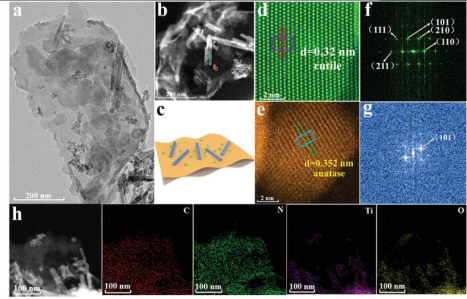Recently, Professor Cui Xiaoqiang from the School of Materials Science and Engineering at Jilin University has made new progress in the field of photocatalytic decomposition of water to produce hydrogen. The research results are titled "A Twin S-Scheme Artificial Photosynthetic System with Self Assembled Heterojunctions Yield Superior Photocatalytic Hydrogen Evolution Rate" and were published online in Advanced Materials on November 2, 2022.
Designing heterojunction photocatalysts that mimic natural photosynthetic systems has always been a valuable research method for photocatalytic hydrogen production. The S-type heterojunction composed of reducing and oxidizing photocatalysts is considered an effective strategy to improve photocatalytic performance. Compared with traditional Z-type heterojunctions, its internal electric field, band bending, and coulomb S-type structure induced gravity can promote charge transfer and improve photocatalytic performance. However, the single junction S-scheme structure still has some drawbacks, such as weak interactions and difficulties in multiphase binding. Therefore, solving the bottleneck problem of poor interface contact and unclear long-term carrier transfer mechanism among three or more different catalysts is crucial for improving the hydrogen evolution efficiency of photocatalysts.

Figure 1: Morphological characterization of ternary photocatalysts
To address this issue, this work proposes a novel "dual S-scheme", which consists of two oxidation type photocatalysts and one reduction type photocatalyst. It is proved by morphology and other characterization that we have successfully inserted two-dimensional graphite carbon nitride nanosheets between anatase TiO2 nanoparticles and H-doped rutile TiO2 nanorods, and formed a new self-assembled structure with double S-type transfer mechanism.

Figure 2: Hydrogen evolution performance of ternary photocatalysts
The dual S-type transfer mechanism generated by this new structure overcomes the limitations of large contact barriers, lattice mismatch, and slow charge transfer in traditional heterojunctions. This photocatalyst exhibits an excellent photocatalytic hydrogen evolution rate of 62.37 mmol g-1 h-1, and exhibits an apparent quantum efficiency of 45.9% at 365 nm, which far exceeds most TiO2 based semiconductor photocatalysts. At the same time, the prepared photocatalyst exhibits excellent cyclic stability.
Ruan Xiaowen, a doctoral candidate in material physics and chemistry, is the lead author of this paper. The corresponding author is Professor Cui Xiaoqiang from the School of Materials Science and Engineering of Jilin University, Professor Jiang Zhifeng from the Energy Research Institute of Jiangsu University, and Sai Kishore RAVI, an assistant professor from the School of Energy and Environment of City University of Hong Kong. This work was supported by the general project of the National Natural Science Foundation of China.
Full article link: https://doi.org/10.1002/adma.202209141